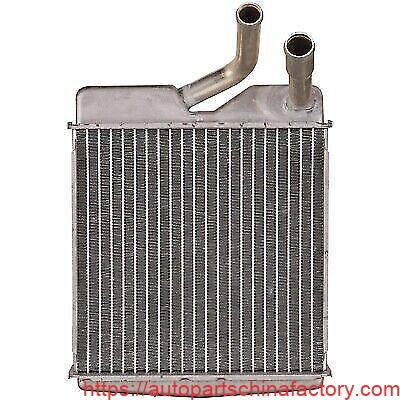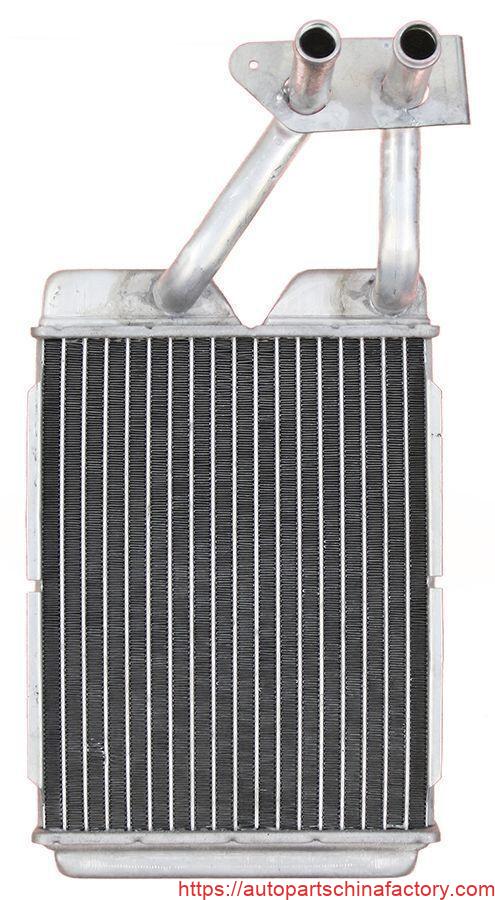- A+
As the seasons change and the temperatures drop, there's one unsung hero in your car that ensures your comfort: the heater core. Often overlooked until it malfunctions, this vital component is responsible for providing that warm, toasty air that makes winter driving bearable. Let's dive into everything you need to know about the automotive heater core.

What is an Automotive Heater Core?
At its core (pun intended!), an automotive heater core is a small radiator-like device typically located deep within your vehicle's dashboard. It's an integral part of your car's heating and ventilation system. Its primary function is to transfer heat from the engine's hot coolant to the air that is then blown into the passenger cabin, warming you and your occupants.
What Does a Heater Core Look Like?
Imagine a miniature radiator, usually rectangular in shape, made of aluminum or sometimes copper. It consists of a series of tubes and fins, much like your engine's main radiator. Coolant flows through these tubes, and air is forced by a fan through the fins, absorbing the heat before being directed into the cabin. It typically has two inlet/outlet pipes for the coolant hoses to connect to.

How Does a Heater Core Work? (Verwendung)
The process is quite ingenious:
- Hot Coolant Flow: Hot engine coolant (the same fluid that cools your engine) is circulated from the engine to the heater core.
- Heat Transfer: As the hot coolant passes through the heater core's tubes, air from the blower fan is pushed across the fins. This air absorbs the heat from the coolant.
- Warm Air Delivery: The now-warmed air is then directed through your car's ventilation ducts and out through the vents into the cabin, providing the heat you feel.
- Coolant Return: The slightly cooler coolant then returns to the engine to be reheated, completing the cycle.
Installation: A Job for the Pros (Often)
Replacing a heater core can be a challenging and time-consuming task. Due to its location deep within the dashboard, it often requires extensive disassembly of the entire dashboard, including the removal of the steering wheel, airbag, radio, and various trim pieces. This complexity is why it's often recommended to have a professional mechanic handle the installation. While a determined DIYer with the right tools and patience can attempt it, be prepared for a significant time commitment and potential frustration.
Material- und Fertigungsstandorte
Most modern heater cores are constructed from Aluminium, due to its excellent heat transfer properties and lighter weight. Older vehicles might have heater cores made of Kupfer.
As for factory locations, major automotive parts manufacturers have production facilities across the globe. You'll find heater cores being manufactured in countries with strong automotive industries, einschließlich:
- China: A significant global manufacturing hub for automotive components.
- Mexiko: A key production location for parts supplied to North American vehicle assembly plants.
- Vereinigte Staaten: Several well-established automotive parts manufacturers operate facilities here.
- Deutschland: Home to many high-quality automotive component suppliers.
- Japan: Another major player in the automotive parts industry.
- Südkorea: A growing presence in automotive component manufacturing.
The specific origin of a heater core will depend on the brand, the vehicle manufacturer's supply chain, and the aftermarket parts supplier.
Price Range of a Heater Core
The cost of a new heater core can vary significantly based on your vehicle's make, model, and year, as well as whether you choose an OEM (Original Equipment Manufacturer) part or an aftermarket equivalent.
- Part Cost: You can expect to pay anywhere from $50 Zu $300+ USD for the heater core itself. Aftermarket options are generally more affordable than OEM parts.
- Labor Cost: This is where the price can jump considerably. Due to the labor-intensive installation, professional replacement can range from $300 Zu $1,000+ USD, depending on the shop's labor rates and the complexity of accessing the heater core in your specific vehicle.
Signs of a Failing Heater Core
Keep an eye out for these indicators that your heater core might be on its way out:
- Sweet, Fruity Smell: This is often the most tell-tale sign, indicating leaking coolant.
- Foggy Windows: Coolant vapor can cause your windows to fog up on the inside, especially when the defroster is on.
- Reduced or No Heat: The most obvious symptom – your car's heater just isn't blowing warm air.
- Coolant Leaks: Puddles of coolant on your passenger side floorboard are a strong indicator.
- Motorüberhitzung: While not a direct symptom, a severely clogged heater core can impede coolant flow and contribute to overheating.
Abschluss
The heater core, though hidden, plays a crucial role in your driving comfort, especially during colder months. Understanding its function, recognizing the signs of failure, and knowing the complexities of its replacement can help you stay ahead of potential issues and ensure you always have a warm ride.




